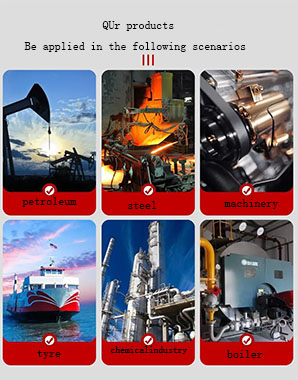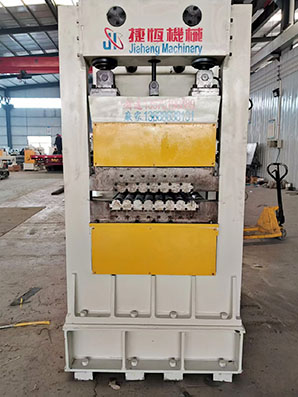Leveling machine
The leveling machines produced by our company have high correction accuracy:
Advanced control system: Equipped with a precise digital control system, it can accurately adjust various parameters in the leveling process in real time, effectively reducing human operation errors, achieving automated fine-tuning, and ensuring that each correction can reach extremely high precision to meet strict quality standards.
High-precision transmission system: Adopting high-precision transmission devices and systems, it can guarantee the accuracy of equipment movement, avoid processing inaccuracy problems caused by transmission errors. Moreover, during long-term operation, it can effectively reduce equipment wear and stably output high-precision correction results.
Precise mechanical structure: With a stable mechanical structure design, it can remain stable under high-intensity working conditions, avoid vibration and displacement, thereby reducing precision problems caused by the instability of the equipment itself and ensuring that the surface flatness of the processed sheets reaches the best state.
High work efficiency:
Rapid correction ability: It can quickly complete the correction work of metal materials in a short time, greatly improving production efficiency. It is especially suitable for the needs of large-scale production, can effectively shorten the production cycle and increase the production capacity of enterprises.
High degree of automation: Possessing automated leveling functions, it reduces the time and labor intensity of manual operations and cuts down on labor costs. Meanwhile, automated operations can also avoid human errors, ensure the stability and consistency of the production process, and further enhance the overall work efficiency.
Improve product quality:
Eliminate material deformation: Effectively eliminate problems such as bending, waviness, and warping of metal sheets, restore the materials to their original flat state, ensure the dimensional accuracy and shape accuracy of products, thereby improving the overall quality of products, and enhancing the stability and durability of products.
Improve surface quality: During the correction process, through precise control and reasonable processes, it can avoid damage to the metal surface, ensure the smoothness and integrity of the product surface, improve the appearance quality of the product, and make the product more competitive in the market.
Homogenize internal stress: Make the internal stress of the sheets released and homogenized, reduce defects such as deformation and cracking caused by the concentration of internal stress, improve the reliability and service life of products. It is of great significance for the manufacturing of parts in some fields with high requirements for material properties, such as aerospace and electronics.
Main Components
Roller System
This is the core component of the leveling machine. Factors such as the number, diameter, material, and arrangement of the rollers have a great impact on the leveling effect. Generally speaking, a larger number of rollers can make the material receive more uniform pressure and more sufficient correction. The material of the rollers is usually high-strength alloy steel and so on, to ensure its wear resistance and sufficient strength to withstand the correction pressure.
For example, the surfaces of the rollers of some high-precision leveling machines will also undergo special heat treatment or coating treatment to improve the hardness and surface finish of the rollers and prevent scratches on the surface of the material during the correction process.
Transmission System
It is responsible for providing power to the rollers so that they can rotate stably and at a constant speed. The transmission system includes components such as motors, reducers, couplings, and transmission shafts. A high-precision transmission system can accurately control the rotational speed and torque of the rollers to ensure the stability and precision of the leveling process.
For example, a transmission system using variable frequency motors can flexibly adjust the rotational speed of the rollers according to different materials and correction requirements to achieve more precise correction.
Control System
It is the "brain" of the leveling machine. The control systems of modern leveling machines are usually digital control systems based on microprocessors. Operators can input various parameters through the operation panel, such as the distance between rollers, correction speed, and pressure magnitude. The control system will accurately control the working states of the transmission system and the roller system according to these input parameters.
For example, some advanced control systems also have automatic diagnosis and alarm functions. When the equipment fails or the parameters are abnormal, they can issue alarms in time and display fault information, facilitating maintenance personnel to quickly locate and solve problems.
Frame Part
It provides support and an installation base for other components. The frame needs to have sufficient strength and stiffness to withstand the huge pressure during the leveling process and prevent the equipment from deforming. The frame is generally welded with high-quality steel and undergoes processes such as aging treatment to eliminate welding stress and improve the stability of the frame.
Classification Methods
Classification by Working Mode
Roller Leveling Machine: This is the most common type of leveling machine. It corrects materials through multiple sets of rollers and is suitable for sheets of various thicknesses and materials, such as metal sheets, plastic sheets, etc.
Press-Type Leveling Machine: It uses the pressure of the press to flatten materials in a large area at one time, and is mainly used for thicker and higher-hardness materials or special occasions with extremely high requirements for flatness.
Classification by Structural Form
Horizontal Leveling Machine: The roller shafts are placed horizontally. This structure facilitates the feeding and discharging of materials and is currently the most widely used structural form, suitable for continuous leveling operations.
Vertical Leveling Machine: The roller shafts are placed vertically. It has certain advantages in space utilization and is usually used for leveling materials in some special production environments or with special shapes.
Classification by Correction Precision
General Precision Leveling Machine: It is mainly used for leveling materials for general industrial purposes with relatively low requirements for flatness, such as the leveling of some decorative sheets in the construction industry.
High-Precision Leveling Machine: It can control the flatness of materials within a very small error range and is used in industries with extremely high requirements for material flatness, such as aerospace, electronics, and precision machinery.
Application Fields
Metal Processing Industry
It is widely used in the processing of metal sheets such as steel sheets, aluminum sheets, and copper sheets. For example, in automobile manufacturing, the raw material steel sheets for body stamping parts need to be leveled by the leveling machine before stamping processing to ensure the quality and dimensional accuracy of the stamping parts.
Mechanical Manufacturing Industry
It is also very important to level the blank materials in the process of machining mechanical parts. For example, after the plate blanks of parts such as the bases and brackets of some large machinery are processed by the leveling machine, the subsequent machining accuracy and product quality can be improved.


Electronics Industry
Materials such as the casings of electronic devices and the substrates of circuit boards have high requirements for flatness. The leveling machine can ensure that the flatness of these materials meets the requirements and provides a guarantee for the precision manufacturing of electronic devices.
Construction Industry
In the processing of building decorative materials, such as metal ceilings and curtain wall panels, the leveling machine is used to correct the materials to make the surfaces of building decorative materials flat and improve the decorative effect of buildings.

Actual shipping photos

Submitted successfully
We will contact you as soon as possible





